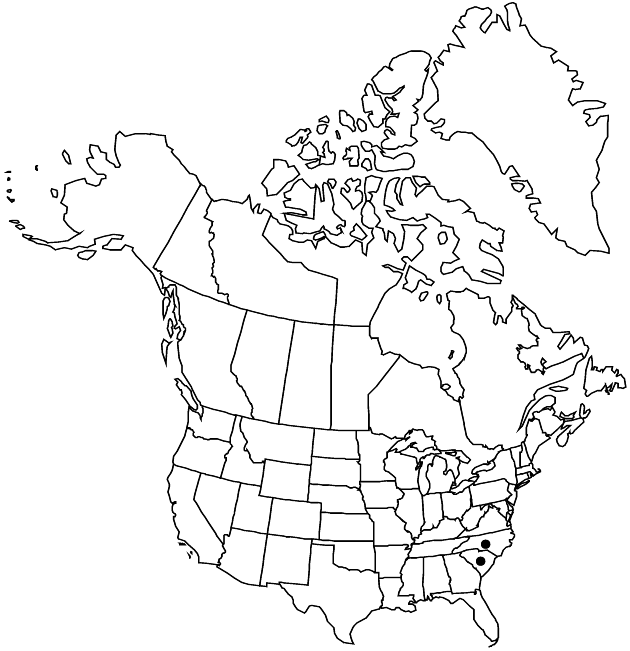Liatris cokeri
Sida 14: 205. 1990.
Plants 25–85 cm. Corms globose. Stems glabrous. Leaves: basal and proximal cauline 1-nerved, lance-linear to linear, 50–150 × 2–5 mm, gradually or abruptly reduced distally, essentially glabrous (proximal margins sparsely ciliate). Heads in dense, racemiform to spiciform arrays (sometimes strongly to weakly secund, especially if branches reclining, internodes 1–5 mm). Peduncles 0 or (ascending) 1–6 (–10) mm. Involucres cylindro-turbinate, (7–) 8–9 × 3.5–4 mm. Phyllaries in 3–4 series, ovate-oblong, oblong, or oblong-lanceolate (inner 7.5–10 × 1–1.8 mm), strongly unequal, essentially glabrous, margins with hyaline borders (lacking at apices), ciliolate, apices (inner and middle, sometimes outer) rounded to blunt, involute-cuspidate to short-acuminate. Florets 4–7 (–9); corolla-tubes pilose inside. Cypselae 3–4 (–5) mm; pappi: lengths ± equaling corollas, bristles barbellate.
Phenology: Flowering (Aug–)Sep–Oct.
Habitat: Sand ridges, sandy fields and roadsides, turkey-oak, longleaf pine-oak
Elevation: 50–150 m
Distribution

N.C., S.C.
Discussion
Pyne and Stucky noted that variants of Liatris cokeri (apparently intermediate toward L. virgata) occur on the coastal plain of North Carolina and South Carolina.
Selected References
None.
Lower Taxa
"barbellate" is not a number."fine" is not a number.